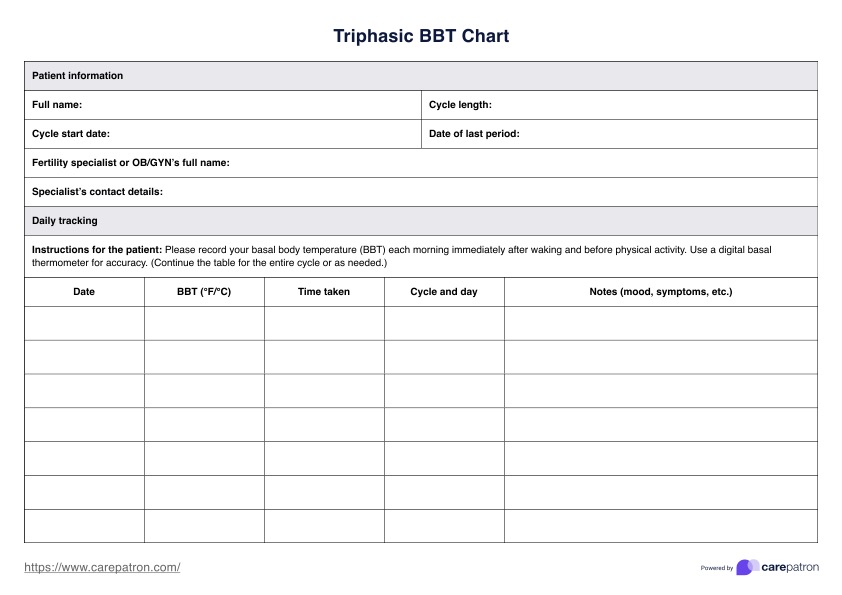Yes. Stress, illness, lack of sleep, and other factors can affect your patient's BBT readings, potentially making it more challenging to interpret their chart accurately. It's important to note any such factors when charting their BBT.

Triphasic BBT Chart
Discover how a Triphasic BBT Chart can help track fertility and early pregnancy signs. Download our free PDF for insights and examples.
Triphasic BBT Chart Template
Commonly asked questions
BBT charting can effectively detect ovulation after it has occurred, as the rise in temperature indicates the presence of the hormone progesterone, which spikes after ovulation. However, it does not predict ovulation in advance.
It varies, but charting for a few cycles can give them a clearer picture of their menstrual cycle pattern. A triphasic pattern would only emerge in cycles where such a pattern occurs, typically indicating potential early pregnancy or hormonal fluctuations.
EHR and practice management software
Get started for free
*No credit card required
Free
$0/usd
Unlimited clients
Telehealth
1GB of storage
Client portal text
Automated billing and online payments











